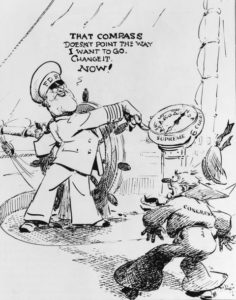Why Do We Have 9 Supreme Court Judges?

You probably know that the current US Supreme Court has a conservative bias. Thanks to RBG’S death and Trump’s appointments, 6 of the 9 justices are considered conservative.
This, the Democrats don’t like. They control the House. They control the Senate. They control the oval office. But they don’t control the Supreme Court. And so, there is talk of “packing” the court – i.e., appointing additional liberal-leaning judges to the court so that it tilts left.
Reading about this made me wonder: How did it come about that the founders settled on 9 judges? And how important is that number?
It turns out that the founders decided on 6 justices. And since then, the number has ranged from 5 to as many as 10.
The first Supreme Court – with 6 justices – was established under George Washington by the Judiciary Act of 1789. At the end of John Adams’ term in office, Congress passed the Judiciary Act of 1801, which brought the number down to 5. Under the incoming president, Thomas Jefferson, Congress repealed that act, putting the number back to 6. And in 1807, they added a seventh.
In order to keep pace with the additional federal court districts that were popping up in the expanding West, Andrew Jackson was able to expand the Supreme Court to 9 in 1837. And in 1863, during the Civil War, a 10th justice was added. But in 1866, when the war was over, Congress brought the number back to 7 to limit the power of Andrew Johnson, Lincoln’s successor. Then in 1869, after Ulysses Grant was elected, the number went back to 9.
In the 1930s, FDR, concerned about opposition to his New Deal spending, unsuccessfully tried to increase the number to 15. (This gave us the term “packing” the court.) But aside from that attempt, the number of Supreme Court justices has remained stable at 9 for more than 150 years.
Bottom line: There is nothing sacred or even historically significant about the number 9. The population of the Supreme Court has accordioned over the years as a result of partisan politicking, which is just what we’re seeing today.
